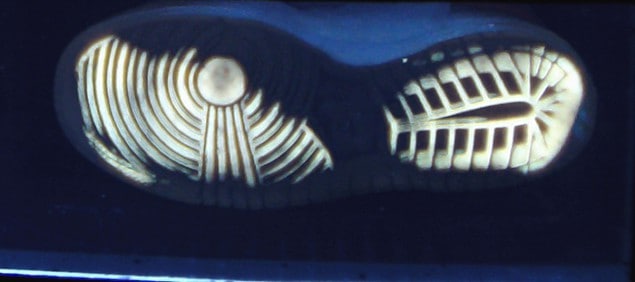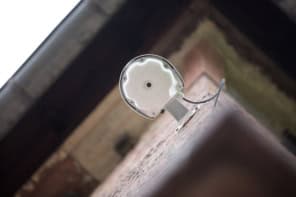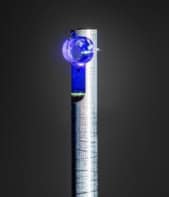
“There is no branch of detective science that is so important and so much neglected as the art of tracing footsteps,” says the fictional detective Sherlock Holmes. Now, UK researchers have developed a new, potentially faster, cheaper and better method for recording impressions of shoeprints from suspects in custody for comparison to prints found at crime scenes.
Given that only a limited number of shoe models are available, shoeprints are less distinctive than fingerprints or DNA traces. However, physicist James Sharp of the University of Nottingham explains that shoeprints can often be linked to a specific item of footwear. “Our gait determines the way we wear our shoes down, so that will give a somewhat distinct pattern when we put our foot on a surface. Also, things like nicks and cuts on the surface of a shoe sole can be used to identify a particular piece of footwear.”
The shoeprint identification process involves a person putting on the shoes of interest and standing on a dye-impregnated pad before standing on a piece of paper. The resulting image is scanned and printed. Somebody looks at the image manually and compares it with a photograph taken at the crime scene. This process is labour intensive and, owing to the high cost of the dye pads and sensitized paper, expensive. It also takes time – a valuable commodity if the police have a suspect in custody.
Escaping light
To improve how shoeprints are taken, Sharp and undergraduate student Jemma Needham have developed an alternative technique that involves the subject standing on a glass surface and rocking his or her feet back and forth to simulate the motion of walking. The glass is illuminated from the side by LEDs such that, when the glass is in contact with air, the illumination is above the critical angle for total internal reflection. This means that light is reflected smoothly from the internal surfaces of the glass and does not emerge from the top or bottom of the glass sheet. However, shoe-sole polymers have refractive indices much closer to that of glass. This means that when a shoe sole is in contact with the surface, the light escapes into the sole and then scatters downwards and emerges from the lower surface of the glass. A webcam underneath the glass records digital images of the contact area as the subject rocks back and forth.
“I’m told by those who know that the images we’re getting are significantly better than what they currently have,” says Sharp.
Imaging expert Nigel Allinson of the University of Lincoln says the work is “an interesting invention, but not revolutionary”, pointing out that similar techniques are already used in some digital fingerprint readers. He also believes that the use of a webcam will not result in an image with sufficiently high resolution. “For that, you need a decent-quality SLR camera [underneath the glass] with a reasonably long focal-length lens so you don’t get distortion,” says Allinson. “That’s going to make quite a big box that you stand on top of, which is a bit impractical.”
The imaging system is described in Scientific Reports.



